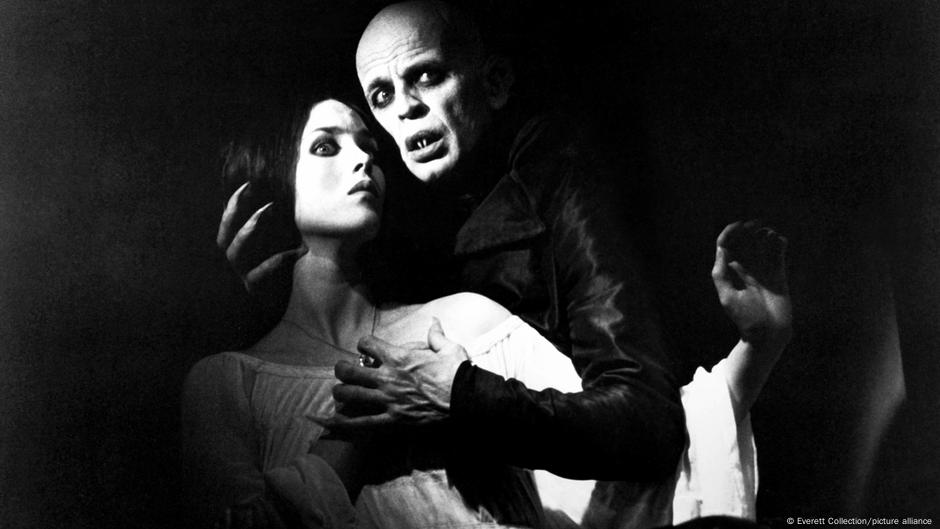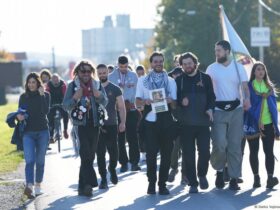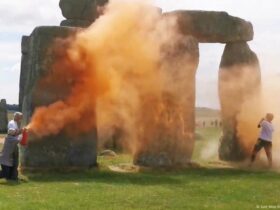The year is 1838. A young German real estate agent, Thomas Hutter, is assigned to travel to remote Transylvania to meet the mysterious Count Orlok regarding a house for sale. While traveling through the Carpathian Mountains, he was warned several times about Orlok, but remained undeterred. Upon arriving at the castle, the Count – pale, cold and sinister – welcomes her personally. Hutter realizes too late that something is wrong in the castle: Orlok is a vampire.
Thus begins Friedrich Wilhelm Murnau’s 1922 silent film classic “Nosferatu – A Symphony of Horror”, today considered a cinematic masterpiece. Murnau introduced a new way of portraying a sense of fear and danger, which laid the foundation for the modern horror film. The genre has many fans around the world, and people often watch horror movies on or around Halloween to get into the scary spirit. But why are they so interesting?
Horror Movies: Psychological ‘Boot Camp’?
Horror movies can be compared to roller coasters: many people enjoy riding them because they like the thrill they get, even if they know it takes place in a safe environment.
Borwin Bandelow, a German psychiatrist and neurologist who studies fear and the human mind, explained in an interview with the German radio station Deutschlandfunk Kultur how the body reacts to such situations.
“When you ride a roller coaster, you feel like you’re going to fly over the turn. Fear hormones flood your body,” Bandello explained. But endorphins are simultaneously released, he said, providing pain relief and a feeling of euphoria. That said, you know the ride has been tested for safety and nothing can happen, but your brain still reacts to the situation.
Horror movies work on the same principles: We experience fear in a safe environment, whether sitting on the couch in our living room or in a plush cinema seat.
However, the horror genre is much more than mere entertainment. American film director Wes Craven (1939–2015) considered horror films a “boot camp for the psyche”, a kind of psychological training.
“In real life, human beings are packaged in very modest packages, they are exposed to real and sometimes catastrophic dangers, such as events [school shootings]But the narrative form puts these fears into a manageable series of events. He once said, “It gives us a way to think rationally about our fears.”
The science behind entertaining scares
Since 2020, the Recreational Fear Lab at Aarhus University, Denmark has been looking into “recreational fear”, or why people willingly put themselves into fear-inducing situations and what effects it has or might have.
One of the lab findings is that controlled recreational fear can positively affect a person’s ability to cope with stress. Mathias Clasen, co-director of the Recreational Fear Lab, explained this as a form of personal emotional development, as individuals develop strategies to deal with fear and negative emotions.
Klassen believes that people who watch horror films not only passively consume, but also actively implement strategies to reach the “sweet spot of fear” – the point where the greatest amount of enjoyment is experienced. If something is too scary, the enjoyment is diminished.
The problem here is that each person’s favorite position is different; People need fear more or less to get to it, which is why some people avoid horror movies and others can’t get enough. Horror fans, unlike people who dislike horror, expect to feel a kind of pleasure, Klassen explained. He said he likes to deal with negative emotions through sports.
Fear as a learning tool
Klassen worked with American psychologist Colton Scrivner, among others, to identify Three types of horror fans: “adrenaline junkies,” who enjoy the instant kick they get; “White Knuckles”, for whom horror is not about entertainment but personal growth; and “Dark Coppers”, who experience both mood enhancement and increased self-insight and personal growth.
Researchers at the Recreational Fear Lab use this scheme but point out that this area is relatively unexplored, with many unanswered questions.
Still, one thing is clear: for fear to serve as a teaching tool, it has to be in the right amount. Klassen warns that this could easily be too much — an issue that comes to the fore around Halloween. Some amusement parks with Halloween-themed attractions also offer “monster-free zones” where young children in particular can have fun without getting scared.
This article was originally published in German.






Leave a Reply